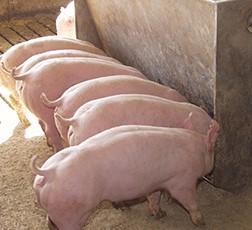Sorghum, also known as milo, represents the third-largest cereal grain grown in the United States. Even though grain sorghum is grown in a relatively small geographic area of the United States, production is on the rise because of increased demand. In its June acreage report, the U.S. Department of Agriculture’s National Agricultural Statistics Service (USDA’s NASS) estimated planted grain sorghum acres at 8.84 million (3.58 million hectares), an 11 percent increase from its March report and a 24 percent increase compared to 2014.
Animal feeding is one of the most important markets for sorghum produced in the United States. Sorghum is utilized in dairy and beef cattle rations as well as in swine and poultry diets. The grain, stalks and leaves are all used in animal feeding. Producers may opt for sorghum based on market prices.
According to the U.S. Sorghum Checkoff Program (USCP), grain sorghum is an excellent nutritional source for swine. While sorghum has a slightly lower fat and energy value than corn, pigs fed sorghum deposit a firmer carcass fat – an advantage for bacon processors. Sorghum distiller’s dried grains with solubles (DDGS) is also an excellent protein source.


